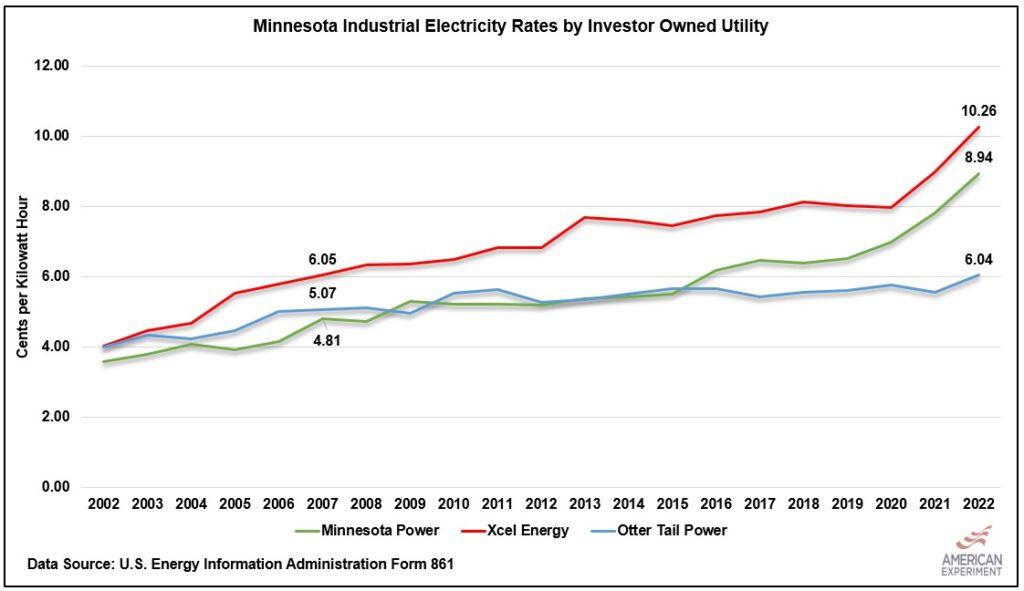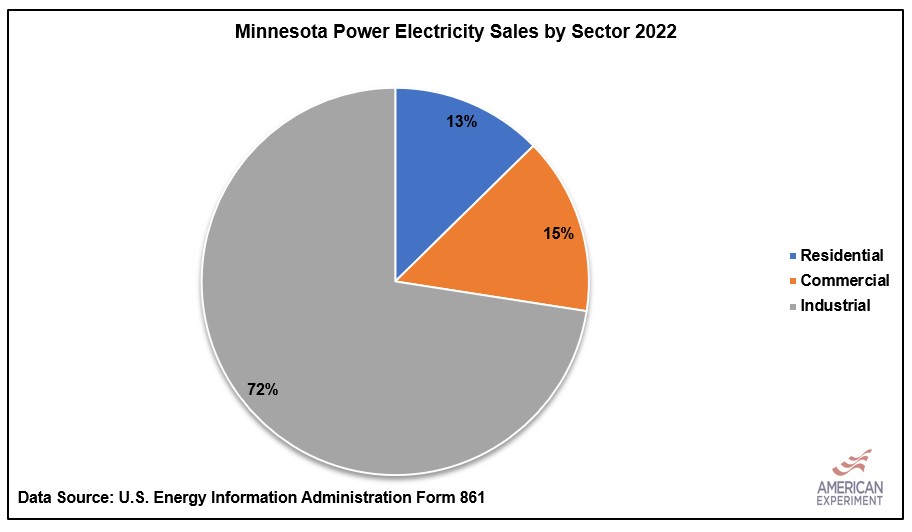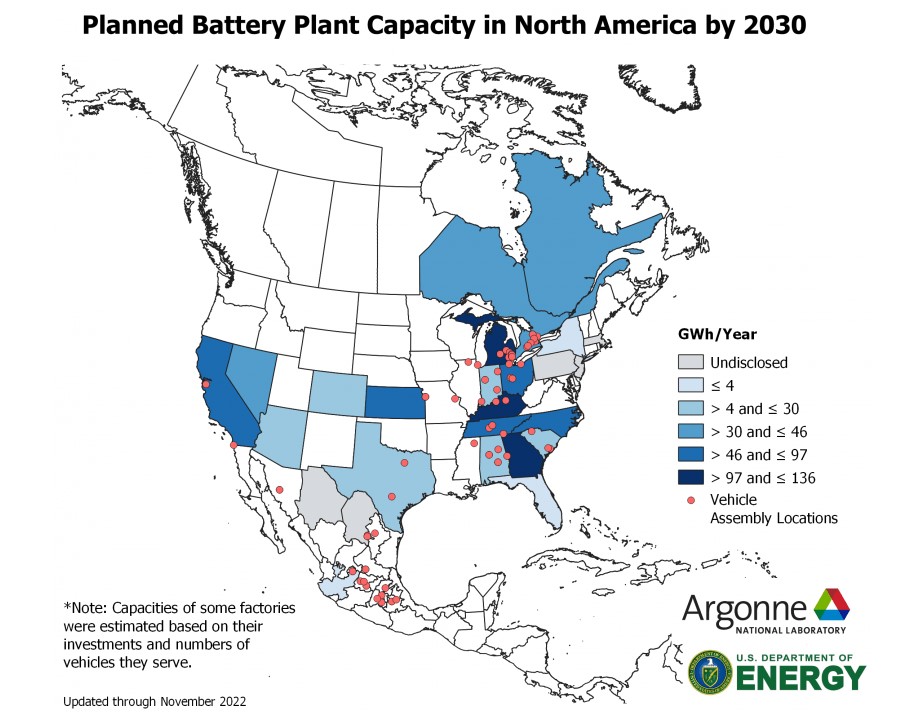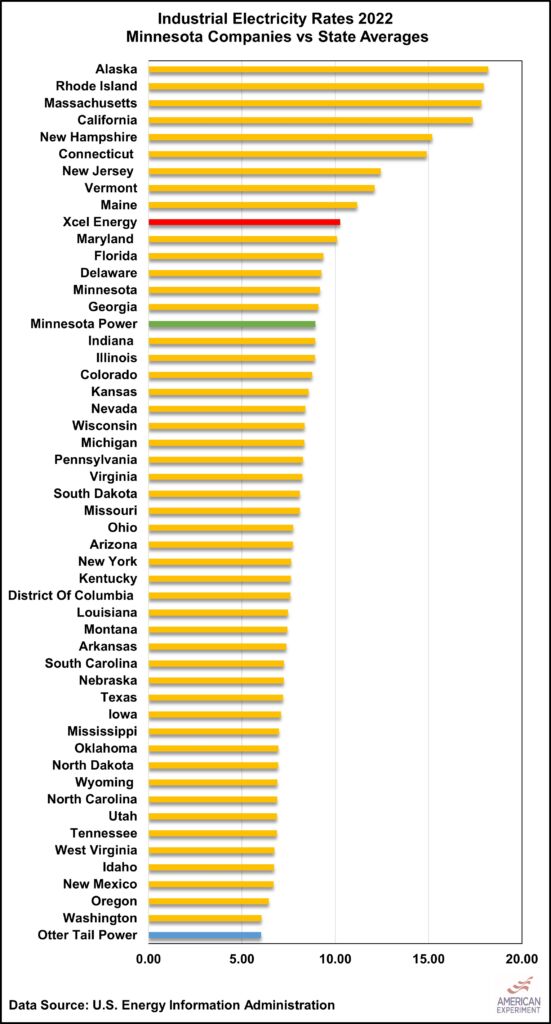Soaring industrial electricity prices threaten Minnesota mining and manufacturing
Minnesota’s mining operations and manufacturers use massive quantities of electricity, accounting for 30 percent of electricity consumption in 2022. Unfortunately, newly released data from the U.S. Energy Information Administration (EIA) show that Xcel Energy and Minnesota Power have skyrocketing industrial electricity prices, threatening the viability of these essential industries.
EIA data show a 28 percent increase in Xcel Energy’s industrial electricity prices since 2020 and nearly 70 percent since 2007, when Minnesota’s original wind and solar mandate was signed into law, which you can see in the graph below.

Mining
Minnesota Power, which serves most of the state’s iron mines and paper mills, performed worse than Xcel Energy. From 2020 to 2022, the utility’s industrial rates also increased by 28 percent, but rates have increased by 85.8 percent since 2007.
This is especially troubling for Minnesota Power because industrial sales accounted for 72 percent of the company’s sales in 2022. This means rising rates since 2020 have cost its industrial customers an additional $146 million, the equivalent of 1,490 high-paying mining jobs at $98,000 per year.

Minnesota Power’s industrial customers will only be able to absorb these higher electricity prices for so long before it affects their ability to compete in a global marketplace. This is especially true in the iron-mining industry, where Minnesota accounts for 85 percent of U.S. production but only about 1.8 percent of global output. This means our iron mines are small fish in a large pond, and rising energy prices threaten their ability to remain competitive in the global marketplace.
Manufacturing
Minnesota’s manufacturers accounted for 11 percent of employment in 2022. Manufacturing jobs are critical in Greater Minnesota, where they can constitute more than 20 percent of the jobs in the county.

Unfortunately, rising energy costs present manufacturers with many of the same headwinds as the state’s mining industry, with production shifting to areas of the world with lower energy costs.
We are already seeing signs of this in Europe, where the solar industry warned that high energy prices made the continent unprofitable to manufacture solar panels. Instead, production is shifting to China, where electricity prices paid by industrial consumers are roughly half those paid by European firms.
This also helps explain why the U.S. Department of Energy predicts that many electric vehicle (EV) battery manufacturing facilities and EV assembly plants will be built in “red” states, many of which have lower energy costs than Minnesota and right-to-work laws.
Michigan, the notable exception to this rule, has committed $1.4 billion to subsidize EV makers or battery manufacturers to lure them to the state.

Unfortunately, Xcel Energy and Minnesota Power stack up poorly compared to industrial electricity rates in the United States. If Xcel Energy and Minnesota Power were their states, they would have the nation’s 11th-highest and 16th-highest industrial electricity prices, respectively, and the highest in the Midwest. In contrast, Otter Tail Power would have the lowest industrial prices of any state in the nation.

Industrial electricity rates will continue to climb in Minnesota because Governor Walz and other liberal legislators passed the 100 percent carbon-free electricity mandate, which we dubbed the “Blackout Bill,” that will lead to drastic increases in electricity prices.
These increases will make Minnesota mining and manufacturing less competitive with firms in other states and nations, therefore hastening the hollowing out of the state’s industrial base. This appeals to the liberal donor class, who want us to mine and make nothing here, but it is decidedly bad for people who work with their hands in Greater Minnesota.
Sadly, there will be no “just transition” or green jobs utopia, only a slow bleeding out of the productive economy as companies seek more affordable pastures.